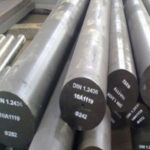Hot work tool steel is a versatile material used in various high-temperature applications, from forging to die casting. One of its critical characteristics is the delicate balance between hardness and toughness. In this comprehensive guide, we will delve deep into the world of hot work tool steel, exploring its properties, the significance of hardness and toughness, and how this balance is achieved.
1. Introduction to Hot Work Tool Steel
1.1 Understanding Hot Work Tool Steel
Hot work tool steel is a specialized alloy designed to withstand extreme temperatures while maintaining its mechanical properties. It is widely used in industries where materials must maintain their strength and durability at high temperatures, such as forging, die casting, and extrusion.
1.2 The Crucial Role of Balance
The effectiveness of hot work tool steel relies on achieving the delicate balance between hardness and toughness. This balance ensures that the material can withstand the rigors of high-temperature applications without becoming brittle.
2. Properties of Hot Work Tool Steel
2.1 Heat Resistance
Hot work tool steel exhibits exceptional heat resistance, allowing it to maintain its integrity at temperatures that would cause regular steel to lose its strength.
2.2 Wear Resistance
The material’s wear resistance is crucial in applications where tools are subjected to friction and abrasion. Hot work tool steel can withstand these forces, ensuring longevity.
2.3 Dimensional Stability
Hot work tool steel maintains its shape and size even at high temperatures, critical for maintaining precision in various industrial processes.
2.4 Toughness
Toughness is the ability to absorb energy without fracturing. It is a key property in ensuring that hot work tool steel can withstand impact and mechanical stress.
3. The Significance of Hardness and Toughness
3.1 Hardness: The Measure of Resistance
Hardness measures a material’s resistance to deformation or indentation. In hot work tool steel, hardness is essential for wear resistance and the ability to cut, shape, and form materials.
3.2 Toughness: The Measure of Durability
Toughness is the ability of a material to withstand stress without fracturing. It ensures that hot work tool steel can endure mechanical shocks and impacts.
3.3 The Balance Dilemma
Achieving the right balance between hardness and toughness is challenging. Increasing hardness often reduces toughness, and vice versa. Striking the perfect equilibrium is the key to effective hot work tool steel.
4. Achieving the Balance
4.1 Alloy Composition
The composition of hot work tool steel alloys is carefully engineered to achieve the desired balance. Alloying elements are added in precise proportions to enhance specific properties while maintaining overall balance.
4.2 Heat Treatment
Heat treatment processes, including quenching and tempering, play a crucial role in fine-tuning the hardness-toughness balance. Precise temperature control and cooling rates are essential in this regard.
4.3 Microstructure Control
Microstructure control through careful heat treatment allows for the development of specific microstructures, such as martensite, which contributes to hardness, and fine carbide structures, which enhance toughness.
5. Applications of Hot Work Tool Steel
5.1 Forging
In forging applications, hot work tool steel must maintain its hardness to withstand the intense pressure and heat involved in shaping metal components.
5.2 Die Casting
Die casting demands hot work tool steel with exceptional toughness to endure the mechanical stresses and rapid cooling associated with the process.
5.3 Extrusion
In extrusion processes, hot work tool steel’s dimensional stability is crucial, ensuring that the extruded material retains its desired shape and quality.
5.4 High-Temperature Machining
Hot work tool steel is used in high-temperature machining operations where hardness is essential for cutting, shaping, and forming materials at elevated temperatures.
6. Challenges and Maintenance
6.1 Wear and Tear
Hot work tool steel tools can experience wear and tear over time due to the demanding conditions they operate under. Regular maintenance and inspection are necessary to identify and address issues promptly.
6.2 Overheating
Overheating can lead to the loss of the desired hardness-toughness balance. Proper temperature control during operations is crucial to prevent this issue.
6.3 Material Compatibility
Ensuring that hot work tool steel is compatible with the materials being processed is essential to maintain tool performance and longevity.
7. FAQ: Addressing Common Questions
7.1 What is the ideal hardness range for hot work tool steel?
The ideal hardness range for hot work tool steel depends on the specific application, but it typically falls within the range of 45 to 65 HRC (Rockwell hardness scale C).
7.2 Can hot work tool steel be adjusted for specific applications?
Yes, hot work tool steel can be customized by adjusting its alloy composition and heat treatment processes to meet the specific requirements of different applications.
7.3 How does microstructure affect toughness?
The microstructure of hot work tool steel can be controlled to enhance toughness. Fine carbide structures and controlled martensite formation contribute to improved toughness.

